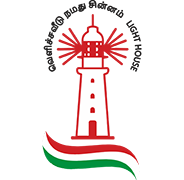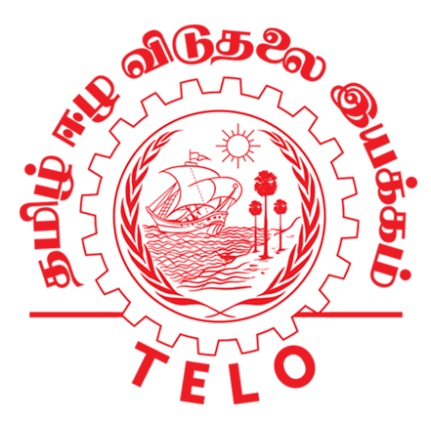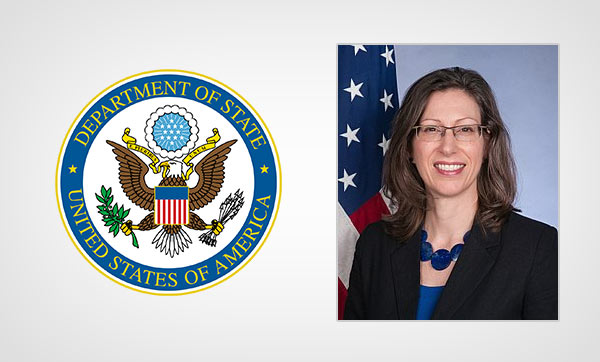The United States was ready to support Sri Lanka it is efforts to manage debt and stabilize the economy, US Ambassador to Colombo, Alaina Teplitz said as the Indian Ocean island is running out of reserves amid unprecedented money printing after cutting taxes.
“Yes, the United States would support the government in managing its debt and finding a more sustainable path forward,” Ambassador Teplitz told reporters in Colombo in an online discussion.
“And we would be happy to have those conversations. We have already indicated that we would like to see more economic stability and in the country and that we would want t support that.”
The US is Sri Lanka’s top buyer of exports and the country’s export apparel industry was born due to the trade liberalization measures undertaken by then-President Ronald Reagan and continued and by President Bill Clinton.
Under his Fed chief Paul Volcker, US tightened monetary policy with no help from the IMF and lowered inflation worldwide ending monetary instability that dated back to the late 1960s sending gold and oil prices sky high.
“…[L]et me say at the outset that our trade policy rests firmly on the foundation of free and open markets — free trade,” President Ronald Reagan told a meeting of business leaders and trade officials in September 23, 1985.
“I, like you, recognize the inescapable conclusion that all of history has taught: The freer the flow of world trade, the stronger the tides for human progress and peace among nations.”
‘Reaganomics’ and the US leadership in trade liberalization not only made goods cheaper in the US but helped lift millions out of poverty in Asia, especially in countries which had good central banks or had reformed central bank to maintain strong exchange rates.
America also helped Sri Lanka develop its stock in a US Aid program. America also helped Sri Lanka develop a petroleum exploration law and market oil blocks in Texas.
US-built Latin America Style Central Bank
Sri Lanka however made limited gains as the country’s central bank printed money and became a frequent or recidivist client of the International Monetary Fund, destroying its currency.
Sri Lanka’s rupee had fallen from 4.70 to 202 since John Exter, a US Federal Reserve official set up a money printing central bank in 1950, abolishing a currency board that had kept macro-economic stability in the country from the previous century.
In marketing unstable soft-pegs and tempting former countries in the UK-linked Sterling Area to become linked to the US dollar indirectly via the Bretton Woods system, inaccurate claims were made against currency boards.
“For a developing economy it (currency board) has a number of serious disadvantages,” Exter said in a report in what turned to be a monstrously wrong claim as soft-peg crisis after soft-peg crisis hit the country after 1950, triggering draconian foreign exchange and trade controls.
“The role of the currency board must remain purely passive it cannot influence the money supply in any way and thus relive the pressure to which rapid swings in the balance of payments may at times subject the economy.”
“A 100 percent (reserve backed) system is thus a “fair weather” system,” he claimed despite the currency board keeping macro-economic stability in then-Ceylon through two World Wars and one Great Depression.
“Under normal balance of payments conditions it is not likely to break down but its excessive rigidity may impose undue hardships in periods of economic crisis,” the Fed official added in perhaps the most famous last words in Sri Lanka’s economic history.
The rupee which had been stable since 1885, had collapsed to below 202 under by 2021 as the US built soft-pegged central bank printed money repeatedly to keep rates down under its counter-cyclical powers worsening imbalances further and requiring eventual radical corrections.
East Asian nations like Singapore, Malaysia and Hong Kong which got independence later and kept the supposedly ‘fair weather system’ of hard pegs and forged ahead by allowing short term rates to float.
Sri Lanka’s central bank was styled after several set up by the Federal Reserve’s Latin America division chief Robert Triffin, inspired by Argentina’s central bank created by Raul Prebisch.
Ironically the Latin American central banks were set up under a ‘good neighbour’ policy of President F D Roosevelt, turned out to be a monumental foreign policy disaster as depreciating currencies destroyed economics making the destroyed countries fertile hunting grounds for socialists and nationalists.
After World War II many of the countries with Triffin-Prebisch central banks led by Cuba (whose Sri Lanka style central bank created by Fed official Henry Wallich) turned increasingly towards the Soviet Union.
Repeated trips to the IMF failed to fix the countries as the fundamental flaws in the US-built central bank were not fixed and its rate setting Monetary Board was not restrained from injecting liquidity to boost growth or finance the budget, tearing Sri Lanka’s balance of payments apart time and again.
Sri Lanka’s currency problems and higher-than-US-inflation come from trying to target interest rates by printing money and also maintain an unstable exchange foreign reserve collecting peg or ‘flexible exchange rate’.
Additional Reading: Sri Lanka: Slaying the Bogey of Inflation
Debt on Debt
Sri Lanka’s foreign reserves had deteriorated rapidly over the past year as record volumes of money is being printed, under a ideology of ‘flexible inflation targeting’ and ‘data driven policy’ encouraged by the IMF in recent years, despite running a soft-peg which has now morphed into Modern Monetary Theory.
Sri Lanka’s debt has risen rapidly as the rupee fell, and domestic real capital has evaporated and growth has slowed. A tax cut in 2019 has worsened money printing by the US-built central bank.
Ambassador Teplitz said Sri Lanka had taken new debt to repay old debt over several years.
“And this is where the debt management is going to be really important because Sri Lanka’s debt obligations have not decreased over time but increased over time,” she said.
“Successive governments have of course managed payments, but a part of that is because they have taken out new debt.”
Under an IMF backed program, also supported by the World Bank, Sri Lanka enacted an Asset Liability Management Law (ALM), where more dollar debt was taken to settle loans instead of sterilizing the balance of payments (mopping up inflows) to repay at least a part of maturing foreign debt.
Some analysts likens the ALM law to the failed ‘Young Plan’ of helping Germany’s Weimar Republic to borrow more through a JP Morgan backed loan, instead of encouraging prudent monetary policy and helping bring Hitler to power as the German economy collapsed from money printing.
The entire debacle is blamed by classical economists on Britain’s John Maynard Keynes who thought there was a non-existent ‘transfer problem’ linked to foreign payments, which may also have driven the thinking behind the ALM Law.
IMF Programs
As Sri Lanka’s foreign reserves continue to fall, the country has refused to go to the IMF.
“So the debt management is going to need some careful management,” Ambassador Teplitz said. “And it really requires international partners to manage.
“I am not sure what the reluctance is to work with the International Monetary Fund. Sri Lanka is a member of the IMF.
“They have a right to recourse to the IMF’s resources and their support and help. And I think while some of the economic reforms potentially suggested might be challenging – you know that is a negotiation that the government could obviously have with the IMF to work things out.
“But the critical need is to get the country on a smoother path going forward.”
However critics have pointed out that IMF program which encouraged the central bank to run monetary policy without a credible anchor in the form of ‘flexible inflation targeting’ (no credible domestic anchor) and ‘flexible exchange rate’ (no credible external anchor) contributed in to the current situation.
The framework critics pointed out worsened the existing dual anchor conflicts that were created in the 1950 soft-peg.
The IMF also taught the central bank to calculate an ‘output gap’ and print money to target growth when a gap supposedly emerged (data driven monetary policy) triggering a currency crisis in 2018 just as the economy was recovering and forcing import controls in the style of Nixon Shocks.
At the time the US Fed was also tightened policy.
The import controls in 2018 coming from IMF backed output gap targeting detailed a free trade agenda and discredited an administration that was friendly to the US, in another foreign policy disaster as the currency collapsed from 153 to 182 to the dollar.
Sri Lanka is now mired in worse import controls.
Former Central Bank Deputy Governor W A Wijewardene who designed a tight program in 2008 (where money and exchange policies did not conflict) had said that the discretionary ‘flexible’ inflation targeting was a ‘corrupted’ inflation targeting.
The IMF may also have helped violate Sri Lanka’s Monetary Law Act, which has no growth mandate but only has a stability mandate, by encouraging output gap targeting.
Similar output gap targeting by then Fed Chief Arthur Burns led to the collapse of the Fed’s peg with gold and the ‘Great Inflation’ that followed until President Reagan came.
US Policy
With ‘independent’ monetary policy Sri Lanka now had the tool to resist US rate increases and try to keep rates down as the Fed tightened.
Sri Lanka got into balance of payments troubles started tightening exchange controls in 1952 as the US Fed tightened in 1951, to end a bubble fired by the purchase of Liberty Bonds at fixed prices, in the same way as the Central Bank is now buying T-bills to maintain a 5.15 percent 12-month yield.
Iran, where the Fed also sent a mission collapsed in the period. Most Latin American pegs collapsed hard in the 1980s as Volcker tightened policy and countries like Mexico (Raul Prebisch worked at the Mexico central bank after being sacked by Argentina), collapsed when Alan Greenspan tightened in 1994.
There are now fears that US Fed had gone too far in printing money and correcting policies will have to come soon.
US Economist Steve Hanke has warned that that the Fed is likely to overshoot its target of 2.4 percent inflation given current developments in the US credit system.
The Fed had earlier triggered the Great Financial Crisis, firing a bubble by targeting a core inflation index while commodity and housing bubble raged.
On April 13, the US Bureau of Labour Statistics said its Consumer Price Index for All Urban Consumers (CPI-U) increased 0.6 percent in March on a seasonally adjusted basis after rising 0.4 percent in February.
“The March 1-month increase was the largest rise since a 0.6-percent increase in August 2012,” the BLS said.
“Over the last 12 months, the all items index increased 2.6 percent before seasonal adjustment.
“The all items index rose 2.6 percent for the 12 months ending March, a much larger increase than the 1.7-percent reported for the period ending in February.”





